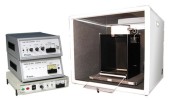Authors
Pauline Obiang, Richard Macrez, Amandine Jullienne, Thomas Bertrand, Flavie Lesept, Carine Ali, Eric Maubert, Denis Vivien, and Véronique Agin
Lab
INSERM, Caen, France
Journal
The Journal of Neuroscience
Abstract
Tissue plasminogen activator (tPA) is a serine protease with pleiotropic actions in the CNS, such as synaptic plasticity and neuronal death. Some effects of tPA require its interaction with the GluN1 subunit of the NMDA receptor (NMDAR), leading to a potentiation of NMDAR signaling. We have reported previously that the pro-neurotoxic effect of tPA is mediated through GluN2D subunit-containing NMDARs. Thus, the aim of the present study was to determine whether GluN2D subunit-containing NMDARs drive tPA-mediated cognitive functions. To address this issue, a strategy of immunization designed to prevent the in vivo interaction of tPA with NMDARs and GluN2D-deficient mice were used in a set of behavioral tasks. Altogether, our data provide the first evidence that tPA influences spatial memory through its preferential interaction with GluN2D subunit-containing NMDARs.
BIOSEB Instruments Used:
Startle and Fear System (BX-START&FEAR)

 Pain - Thermal Allodynia / Hyperalgesia
Pain - Thermal Allodynia / Hyperalgesia Pain - Spontaneous Pain - Postural Deficit
Pain - Spontaneous Pain - Postural Deficit Pain - Mechanical Allodynia / Hyperalgesia
Pain - Mechanical Allodynia / Hyperalgesia Learning/Memory - Attention - Addiction
Learning/Memory - Attention - Addiction Physiology & Respiratory Research
Physiology & Respiratory Research
 Pain
Pain Metabolism
Metabolism Motor control
Motor control Neurodegeneration
Neurodegeneration Cross-disciplinary subjects
Cross-disciplinary subjects Muscular system
Muscular system General activity
General activity Mood Disorders
Mood Disorders Other disorders
Other disorders Joints
Joints Central Nervous System (CNS)
Central Nervous System (CNS) Sensory system
Sensory system
